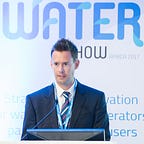The Green Economy and Water Conservation: Strategies and Best Practices
The Green Economy is an economic model that promotes sustainability and the conservation of natural resources. Water conservation is an important aspect of the Green Economy, as it is critical for ensuring sustainable development and the protection of our planet’s natural resources. Explore some of the strategies and best practices for water conservation in the Green Economy.
The Green Economy is an economic model that promotes sustainability and the conservation of natural resources. The Green Economy is based on the principles of the circular economy, which seeks to minimize waste and promote the sustainable use of natural resources. The Green Economy seeks to promote sustainable development by balancing economic growth with environmental protection and social well-being.
Strategies for Water Conservation in the Green Economy
There are various strategies for water conservation in the Green Economy, including the following.
Water Efficiency Measures
Water efficiency measures involve reducing the amount of water used in various sectors, such as agriculture, industry, and households. This can include measures such as the use of water-efficient technologies, including low-flow faucets and showers, and the implementation of water-efficient practices, such as irrigation scheduling and leak detection.
Water Recycling and Reuse
Water recycling and reuse involves the treatment and reuse of wastewater for non-potable purposes, such as irrigation, industrial processes, and toilet flushing. Water recycling and reuse can help to reduce the demand for freshwater resources and promote resource efficiency.
Sustainable Agriculture
Sustainable agriculture involves the use of practices that promote the conservation and sustainable use of natural resources, including water. This can include measures such as the use of cover crops, crop rotation, and reduced tillage. Sustainable agriculture can help to conserve water resources, improve soil health, and promote sustainable development.
Green Infrastructure
Green infrastructure involves the use of natural systems, such as wetlands, green roofs, and permeable pavements, to manage water resources. Green infrastructure can help to reduce the impacts of urbanization on water resources, improve water quality, and provide a range of co-benefits, such as improved air quality and biodiversity conservation.
Best Practices for Water Conservation in the Green Economy
There are various best practices available for water conservation in the Green Economy, including the following.
Integrated Water Resources Management
Integrated Water Resources Management (IWRM) involves the coordinated development and management of water resources, balancing social, economic, and environmental objectives. IWRM promotes a holistic approach to water management, which includes stakeholder engagement, the integration of environmental and social considerations, and the use of a range of management tools, such as water allocation, water pricing, and water quality management.
Water Footprint Assessment
Water Footprint Assessment (WFA) is a tool that helps to assess the environmental and social impacts of water use. WFA can help to identify water-intensive processes and sectors, and can provide guidance on how to reduce water use and promote sustainable development.
Public Awareness and Education
Public awareness and education are critical for promoting sustainable water management practices. Public awareness campaigns can help to raise awareness about the importance of water conservation and can provide guidance on how to reduce water use and promote sustainable development.
The Take-Out
Water conservation is critical for ensuring sustainable development within the Green Economy.
Our Future Water LinkedIn Newsletter
Click here to sign up for Our Future Water’s LinkedIn newsletter.
Communities
Click here to join the Our Future Water Network. Be part of the community.
Join the conversation on the following LinkedIn groups: Urban Water Security, Our Future Water, Circular Water Economy, Blue-Green Infrastructure, Nature-Based Solutions, Urban and Regional Futures, Climate Resilient Water Resources Management, and Water Governance
